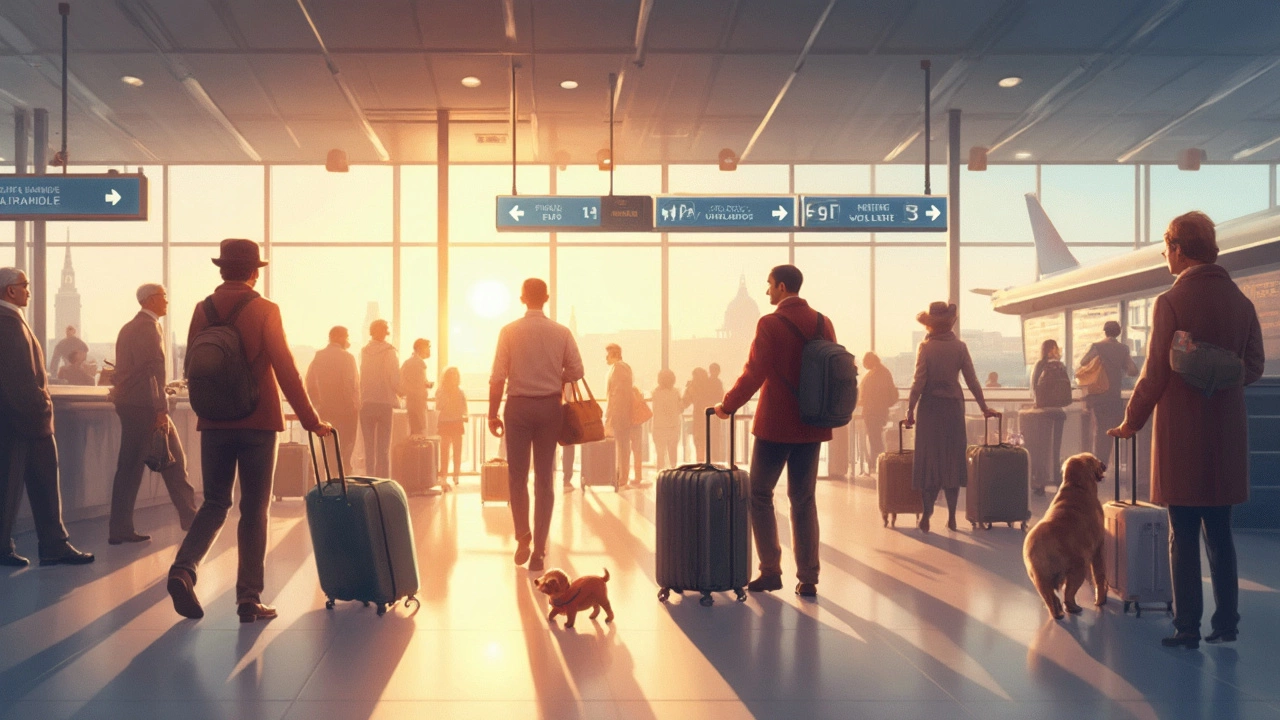Pet Transport Tips: Safe Travel for Dogs, Cats & More
Got a pet and need to hit the road or catch a flight? Moving a dog or cat can feel like a puzzle, but with the right steps you can keep it easy and stress‑free. Below you’ll find simple advice you can use right now, whether you’re loading the car for a weekend getaway or booking a seat on a plane.
Car and Train Travel Made Simple
First, think about a secure carrier or a pet‑proof seat belt. A sturdy crate that vents well stops your pet from bouncing around and protects them if you have a sudden stop. For dogs who love the window view, a mesh barrier works well – they can see out without slipping out.
Pack a travel bag with food, water, treats, a leash, poop bags and a favorite toy. Keep a water bowl handy and offer a sip every hour; dehydration is the most common issue on longer drives. If your pet gets car‑sick, pause every two hours, let them stretch, and have a towel ready for any mess.
Flying With Your Furry Friend
Airlines each have their own pet policies, so start by checking the carrier size limits and fee structure. Most carriers must fit under the seat in front of you, and the pet has to sit or lie down comfortably. Some airlines allow you to buy a separate seat for a larger dog – that’s the “buy dog plane seat” option, and it often costs more but gives your pet extra space.
Book early. Seats for pets are limited and fill up fast, especially in peak travel seasons. When you check‑in, let the staff know you have a pet and ask about any extra paperwork. A health certificate from the vet, dated within ten days, is usually required for domestic flights.
Before the flight, give your pet a light meal about four hours prior. Too full can cause nausea, too empty can make them anxious. A calming spray or a piece of clothing with your scent can help calm nerves. Place a familiar blanket in the carrier – the smell will make the cramped space feel more like home.
During the flight, keep the carrier under the seat, not in the overhead bin. This keeps the temperature stable and lets you check on them quickly. If the flight is long, ask the crew for water; many will gladly pour a little into a small bowl.
After landing, give your pet a chance to relieve itself as soon as you’re out of the terminal. A quick walk also burns off any built‑up stress.
Overall, budgeting for pet travel is easier when you know the costs up front. Airline fees range from £20 to £100 for a carrier, plus any extra seat purchase. Add in a travel‑size crate (£30‑£60), pet‑friendly accommodation fees, and a few extra treats, and you have a clear picture of the total spend.
Whether it’s a road trip, a train ride, or a flight across the country, the key to successful pet transport is planning, the right equipment, and keeping your animal’s comfort top of mind. Follow these steps, stay calm, and you and your pet will arrive at your destination ready for the next adventure.
Posted By Bryndle Redding On 4 Mar 2025 Comments (0)
How to Travel with Your Pet: A Practical Guide
Planning to travel with your pet can be both exciting and stressful. This guide covers essential tips for a hassle-free adventure with your furry friend, including airline travel guidelines, packing necessities, and road trip advice. Learn how to ensure a comfortable and safe journey for your pet and discover interesting facts about pet-friendly options worldwide. Whether flying or driving, make your next trip with your pet smooth and enjoyable.
READ MORE